Birth of the Bikini 👙 and the Great Baby Boom
This week in history: June 2–8, 1946
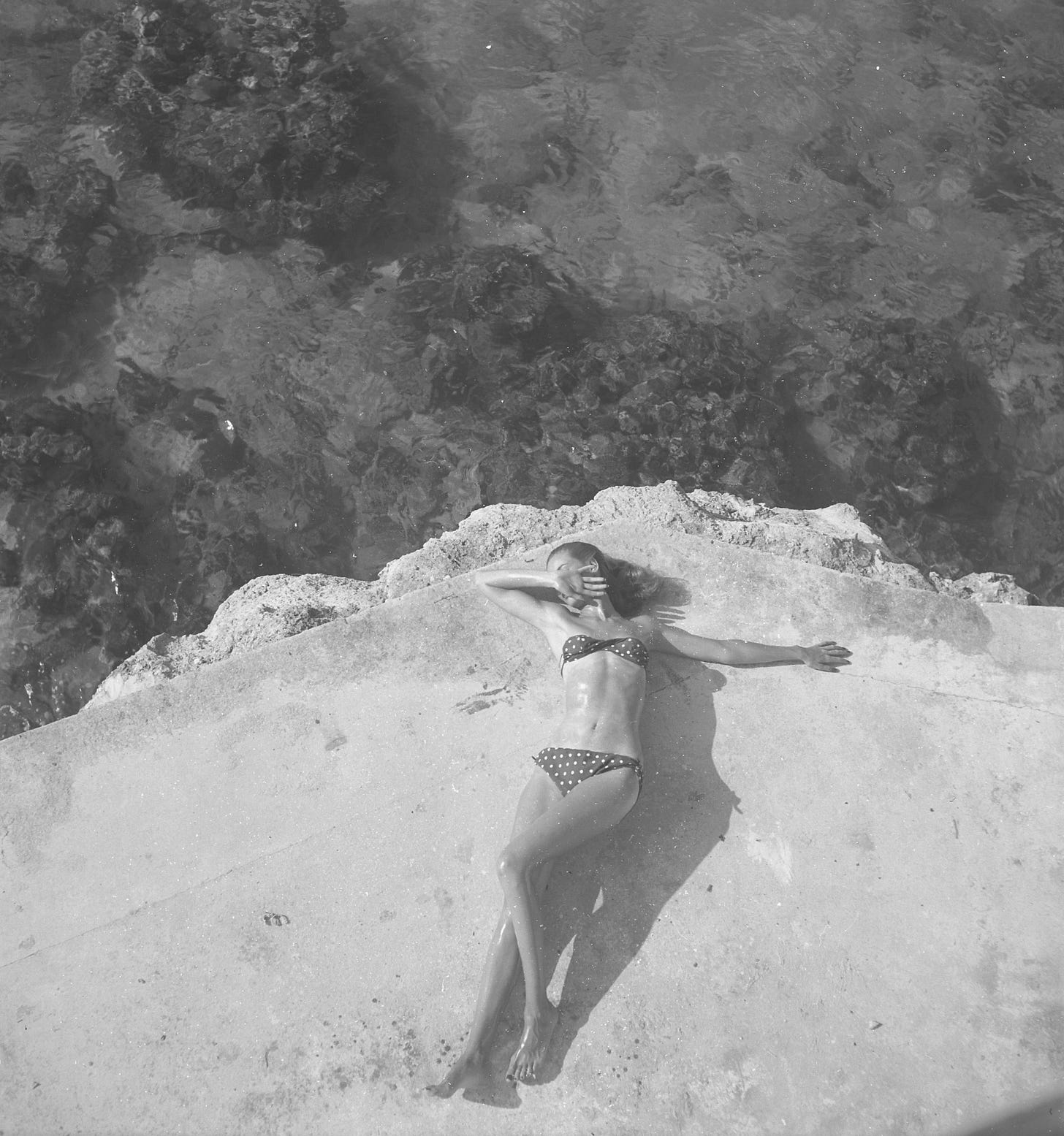
The passing of Memorial Day marks the onset of summer vacation season. Beachgoers load up their trucks and trailers with floats, lounge chairs, coolers, and groceries, then flock to the coast for a week of fun in the sun.
I happen to be writing this during a break from packing for my own family beach trip. I’ll be taking all the usual gear, with one exception.
No bikinis.
I last donned one in Florida during my 20s, when my husband and I lived in Orlando and frequented New Smyrna and Daytona beaches. As a teen, I’d travel with a group of high school friends from Virginia to Myrtle Beach for what was known as “Senior Week”—whether we were seniors or not. We never took our bikinis off.
Even though I now wear something much more modest on the beach, we shall celebrate this two-piece phenomenon, because it just so happens the very first one debuted in France, 78 years ago, on June 3, 1946.

OK Boomers
Before we dive in, let’s take a look back at life in 1946. World War II ended September 2, 1945, kicking off the great baby boom. Approximately 3.4 million babies were born in 1946 alone—20 percent more than in 1945.
The average family annual income was $3,000, while individuals brought home $1,125/year. A two-person family earned $2,386/year and the average house cost $5,150.
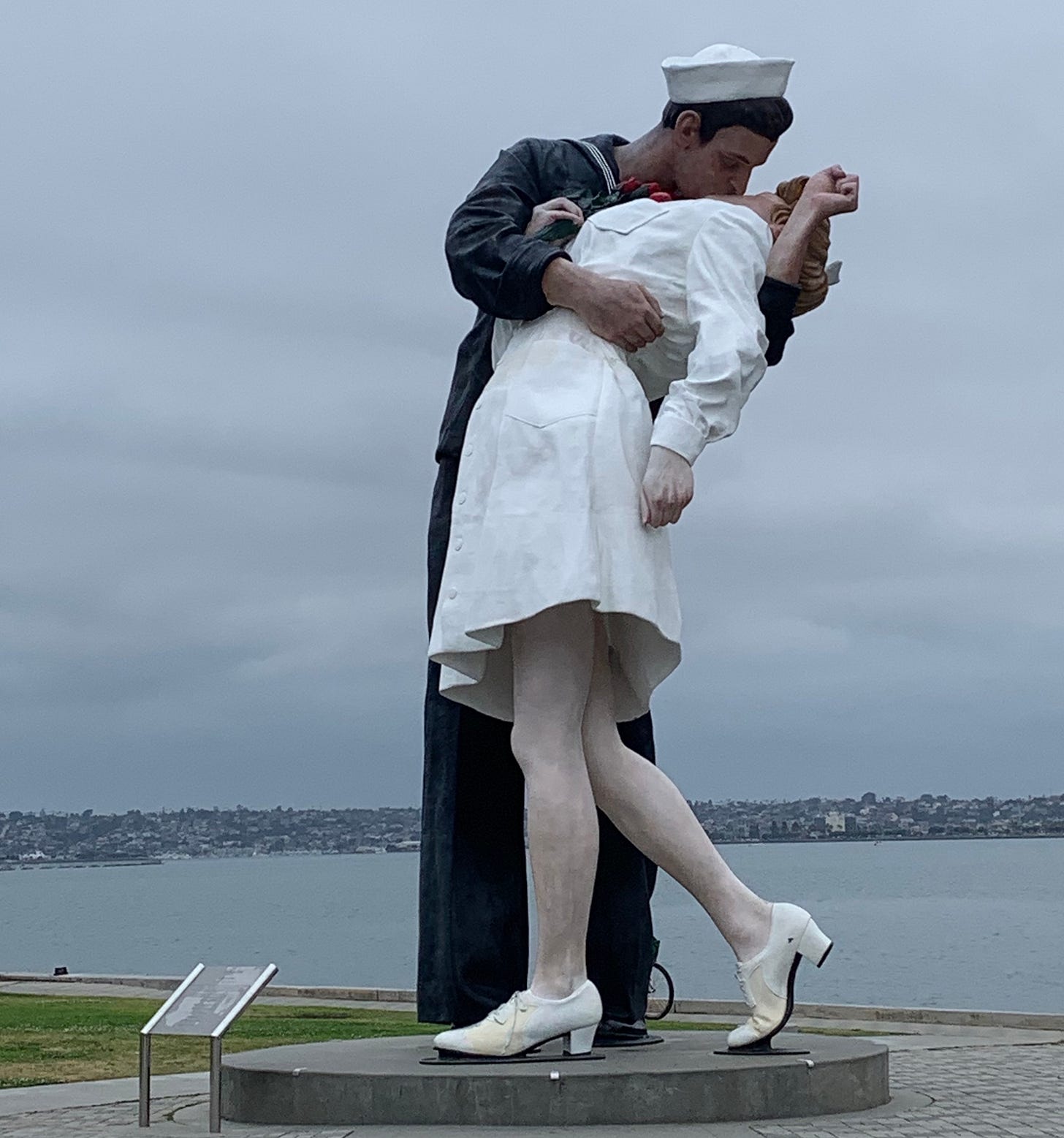
Americans paid $.21/gallon to fill up their Oldsmobile Series 98 Club Sedan, 1946’s top-selling car according to some sources. (Other sources claim it was the Chrysler Town and Country Convertible.) Oldsmobile sold a total 112,680 cars that year, including 12,891 Valiants for handicapped service men. An average new car cost $1,125 that year, while a top-of-the-line Oldsmobile Custom Cruiser 98 convertible cost $1,840.
This old American Airlines ad displays what it cost for the following flights from Boston: $125.10 to Los Angeles, $72.95 to Dallas, $39.65 to Chicago, and $8.35 to New York. The Golden Age of Flying was just around the corner.
Post-war grocery prices had stabilized by 1946. Shoppers paid 59 cents for a dozen eggs, 67 cents for a gallon of milk, and 10 cents for a loaf of white bread. A postage stamp cost 3 cents and a movie ticket cost 55 cents.
Speaking of movies, It's a Wonderful Life starring Jimmy Stewart and Donna Reed, was 1946’s best-selling movie. The top five songs, according to Billboard, were “Prisoner of Love” by Perry Como, “To Each His Own” by Eddy Howard, “The Gypsy” by The Ink Spots, “Five Minutes More” by Frank Sinatra, and “Rumors are Flying” by Frankie Carle. The No. 1 album for 1946 was The Voice of Frank Sinatra.
’40s Fashion
Europe’s involvement in World War II shifted fashion editors’ focus away from Paris and toward American designers during the 1940s. This opened the door for a Los Angeles costume designer named Gilbert Adrian to enter the scene.
Noted for the “broad-shouldered” look he created for Joan Crawford, Adrian worked as head of costume design at MGM Studios from 1929 to 1941, dressing stars like Norma Shearer and Greta Garbo, in addition to Crawford. He opened a Beverly Hills salon in 1942.
Gilbert and other American designers focused on the mid-’40s casual-wear trend that featured swing coats, balloon sleeves, plaids, stripes, broad shoulders, peplum waists, bloomer suits, cropped slacks, bare midriffs, and bare-shouldered looks.
Of those trends, the bare midriff gave Paris an opportunity to step back into the fashion spotlight in 1946 with a phenomenon that would transform swimwear forever.
Four Triangles
By the time you read this, I’ll be sipping a gin and tonic with my toes in the sand and a magazine in my hand. Kure Beach will be covered with bikini-clad young things—my daughter among them.
We can thank two French designers for this alluring invention. Some say the bikini debuted June 3, 1946, while others date its premiere to July 5, 1946. Here’s what my research suggests.
French designer Jacques Heim originally created a two-piece swimsuit in 1932 consisting of a bra with ruffles and feminine bloomers. He called it the Atome and described it as the world’s “smallest bathing suit.” However, only a small percentage of women were ready to reveal their midriff at that time, so he put the Atome on hold … and waited. Fourteen years later, on June 3, 1946, Heim reintroduced the ensemble.
Meanwhile, French engineer and clothing designer Louis Réard, who had taken over his mother’s Paris lingerie shop in 1940, noticed that women in Saint Tropez were folding their swimsuits up to get a better tan. With this in mind, Réard took Heim’s concept even further by creating a navel-revealing swimsuit consisting of four triangles of fabric connected by string.
Réard named it the “bikini” after Bikini Atoll—the site of the Operations Crossroads nuclear weapons test in the Pacific Ocean on July 1, 1946—saying it would create a “burst of excitement” similar to the detonation of a nuclear device. Réard debuted his creation July 5, 1946, on a 19-year-old nude dancer named Micheline Bernadini at the Piscine Molitor in Paris. Although controversial at the time, the concept caught on and the name stuck. Today it’s a beach fashion staple.
As you read this, I’m likely surrounded by bikinis. It’s one piece of beach fashion—or shall we say two?—that I’m quite sure will continue to grow in popularity, while shrinking in size.
So let’s all raise our glass to the birth of the bikini—and be grateful for the youthful days when we could attractively wear them. 😉
Thanks for reading yet another installment of This Week in History. As noted, I’m at the beach with my family this week, so
will be guest-posting for me this Sunday, June 9. I’ll return the week of June 16.




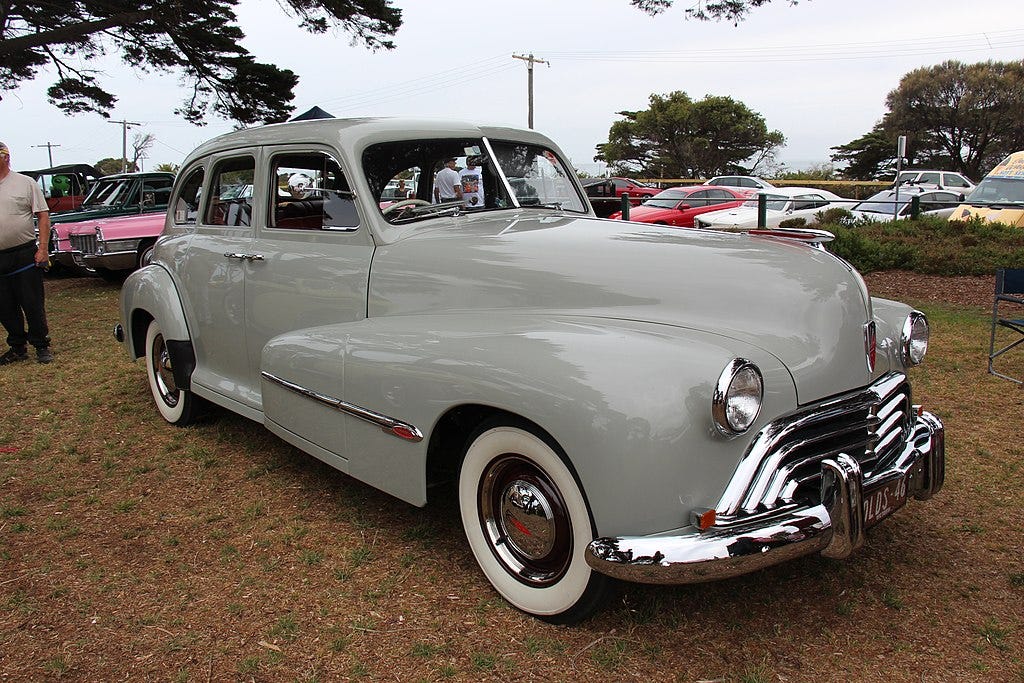
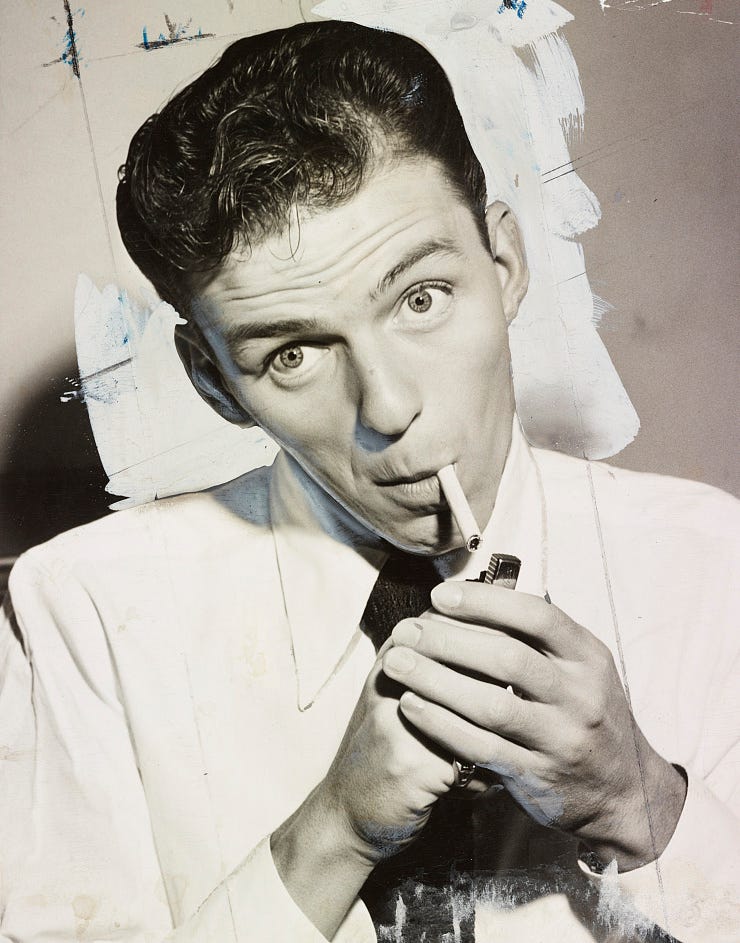

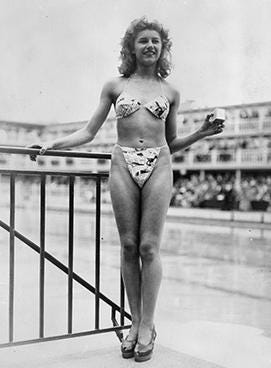
What a revealing history! Thank you. And to think I was a student bored by geometry's parallelograms, rectangles, and trapezoids. What a square I was!